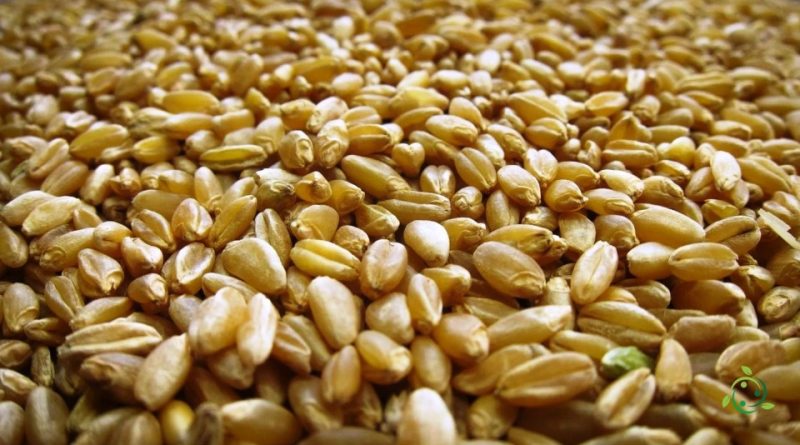Nutritional value of durum wheat
Nutritional value of durum wheat
Durum wheat (Triticum durum Desf.) is a herbaceous plant of the Poaceae family, widely cultivated for transformation into semolina.
Characteristics –
Durum wheat is a variety of wheat that is widely cultivated and used all over the world for the production of pasta, couscous, bread and other bakery products.
Durum wheat is an annual herbaceous plant about 60-120 centimeters tall. Its leaves are long, narrow and lanceolate, dark green in colour.
The ears of durum wheat are long and narrow, with numerous grains arranged along the ear. The grains are supported by sturdy stems.
The grains of durum wheat are hard, robust and yellow-amber in colour. They are generally larger and harder than the grains of common wheat, another variety of wheat commonly grown for making bread.
Durum wheat is known to have a high content of gluten, a protein that gives pasta elasticity and contributes to its texture. This is one of the main reasons why durum wheat is the preferred choice for the production of high quality pasta.
Durum wheat is mainly grown for the production of semolina, which is the basic raw material for pasta. Durum wheat semolina is ground to obtain semolina flour, which is then used to make dry pasta, such as spaghetti, fusilli, lasagne and many other types of traditional Italian and Mediterranean pasta. It is also used to make couscous and some types of bread.
Durum wheat is known for its ability to grow in hot, dry climate areas and is adaptable to a variety of soil conditions.
Nutritional card –
Durum wheat is a good source of complex carbohydrates, protein, fiber, B vitamins and minerals such as iron and magnesium.
Below is an approximate nutritional card for 100 grams of raw durum wheat:
– Calories: 364 kcal
– Protein: 12.2 grams
– Fat: 2.5 grams
– Saturated fat: 0.4 grams
– Carbohydrates: 73.4 grams
– Sugars: 0.4 grams
– Fibers: 10.7 grams
– Vitamin B1 (Thiamine): 0.383 milligrams (32% of the recommended daily value)
– Vitamin B2 (Riboflavin): 0.048 milligrams (3% of the recommended daily value)
– Vitamin B3 (Niacin): 5.09 milligrams (32% of the recommended daily value)
– Vitamin B6 (Pyridoxine): 0.336 milligrams (21% of the recommended daily value)
– Folate (Vitamin B9): 38 micrograms (10% of the recommended daily value)
– Iron: 3.19 milligrams (26% of the recommended daily value)
– Magnesium: 144 milligrams (36% of the recommended daily value)
– Phosphorus: 306 milligrams (44% of the recommended daily value)
– Potassium: 366 milligrams (8% of the recommended daily value)
– Zinc: 2.77 milligrams (28% of the recommended daily value)
Keep in mind that the nutritional composition of durum wheat may vary slightly based on factors such as variety, growing conditions and cooking method. These values are a general estimate only and may be subject to slight fluctuations. Furthermore, cooking durum wheat can affect its nutritional composition.
Property –
Durum wheat is widely used in the production of pasta, couscous, bread and other food products. It has some important nutritional properties, among which we mention.
Durum wheat is mainly composed of complex carbohydrates, which provide a slow-release source of energy. These carbohydrates are an essential part of a balanced diet.
Durum wheat grains are higher in protein than other wheat varieties. Durum wheat proteins are essential for the growth and repair of tissues in the human body.
Durum wheat contains dietary fiber, which is important for digestive health. Fiber can help regulate digestion and prevent problems like constipation.
Durum wheat is a good source of some B vitamins, such as niacin (vitamin B3) and folic acid (vitamin B9). These vitamins play an important role in energy metabolism and DNA formation.
Contains minerals such as iron, magnesium and phosphorus. Iron is essential for the transport of oxygen in the blood, while magnesium and phosphorus are involved in many physiological processes in the body.
Durum wheat contains antioxidants such as vitamin E, which can help protect cells from oxidative stress and is naturally low in saturated fat and contains no cholesterol.
Durum wheat provides a moderate amount of calories, but its caloric density can vary depending on how it is prepared and the seasonings used. For example, plain pasta has fewer calories than pasta topped with rich sauces.
It should be noted that durum wheat pasta and other durum wheat products tend to be part of meals that include other ingredients, such as sauces, vegetables and proteins. The nutritional composition of a pasta dish or other durum wheat-based food can vary considerably depending on the ingredients added.
In general, durum wheat can be a nutritious part of a balanced diet, but it’s important to consume it in moderation and in combination with other foods to ensure a variety of nutrients in your overall diet.

